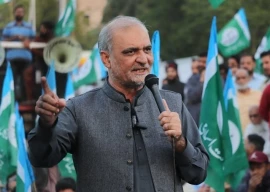
Iran is a complex country placed right in the middle of a highly complex world. It is surrounded by a number of states openly hostile to it. Tehran reacted to the sanctions imposed on it by the West and the United Nations by supporting a number of militias, including the Hezbollah in Lebanon and the Mehdi Army in Iraq. It has also been a strong supporter of the beleaguered regime of Bashar al-Assad in Syria. While the monarchies of the Gulf, in particular Saudi Arabia, were openly suspicious of Iran’s intentions in the region, they found themselves on the same side as Tehran in dealing with the rise of the extremist Islamic Caliphate, also known as the Islamic State of Iraq and Syria (IS). All this is likely to change as a result of the transformation of the Iranian economy in the next decade and a half. This is the period during which the large powers would like to see Tehran to take a number of actions to give comfort to the world outside that had no intention of going nuclear.
Most analysts agree that it will take 10 to 15 years before the impact of the July 14 deal with Iran becomes fully apparent. The sceptics paint a dark picture. They are of the view that once the period of vigilant and intrusive inspection is over, Iran will go quickly nuclear, acquire several weapons and the systems to deliver them, and begin brandishing the new weaponry to have its way in the region. It would thus become a dominant player in the region but its rise will be challenged by other governments. Not only that, Israel, perhaps supported by Arab monarchies, could opt for military action to contain Iran. Militarisation of the area, already underway, will pick up pace. The July agreement, therefore, lost the leverage that had been obtained to influence Tehran. A slight tightening of the sanctions screw would have yielded more rewards — the objective should have been to eliminate altogether any probability of Iran going nuclear, not just postponing it.
It is interesting that in the long interview President Obama gave to the journalist Thomas L Freidman to explain why he had used so much of his political capital to sign the deal with Iran, the president focused entirely on the impact it will have on curtailing Tehran’s nuclear ambitions. He brushed aside the belief that the deal will have consequences beyond the nuclear field. He limited the scope of the impact in order to focus on the criticism that he had not negotiated an airtight agreement. “Don’t judge me on whether this deal transforms Iran, ends Iran’s aggressive behaviour toward some of its Arab neighbours or leads to detente between sects. Judge me on one thing: does this deal prevent Iran from breaking out with a nuclear weapon for the next 10 years and is a better outcome for America, Israel, and our Arab allies than any other alternative on the table?”
I offer an outcome of the deal that is more far-reaching than the one suggested by President Obama in his Freidman interview. Let us speculate what could result from the deal 15 years hence, by the year 2030. That will be the time when the restrictions imposed by the deal on Iran would have run their course and the country will be required to abide by the framework to which it had agreed when it signed the Nuclear Non-Proliferation Treaty (NPT). By that time, Iran would have fully established itself as a responsible and political regional power. The economy would have revived; it would not only have overcome the slack resulting from years of sanctions, but also begun to make full use of its enormous energy resources and human resource potential. Growing at an average of 10 per cent a year — up from the depressed growth rate of only 3.0 per cent at this time — its economy would have quadrupled in size, reaching a total output of $1.75 trillion at today’s prices. It would have added another 22 million to its population, reaching 100 million by 2015. Per capita income would have reached $17,500. By 2015, the rate of unemployment had reached the worrying level of 20 per cent, affecting especially women (20.3 per cent unemployed) and youth (24 per cent unemployed). Economic growth and restructuring of the economy will bring down the unemployment rate to five per cent. It was the high rate of unemployment that no doubt persuaded the regime to agree to the terms of the 2015 deal with P5+1.
Although Iran has the second largest reserves of natural gas and the fourth largest oil reserves, it would have diversified its exports away from energy products to manufacturing and modern services. Nonetheless, it will become the central hub of intra-continental gas and oil pipelines linking not only its own energy fields but also that of with Central Asia with China, India, Pakistan and Bangladesh. The Iran-Pakistan-India pipeline confined to the cold storage would have been revived and linked with the China-Pakistan Economic Corridor. Four non-Arab Muslim states — Iran, Turkey, Pakistan and Afghanistan — will probably establish a sub-regional economic and trading arrangement.
Published in The Express Tribune, July 27th, 2015.
Like Opinion & Editorial on Facebook, follow @ETOpEd on Twitter to receive all updates on all our daily pieces.























































COMMENTS (1)
Comments are moderated and generally will be posted if they are on-topic and not abusive.
For more information, please see our Comments FAQ